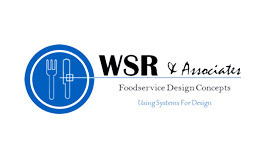Food service consulting firm WSR & Associates had been using everything from chalkboards to spreadsheets to manage its workload when project manager Ed Reich discovered LiquidPlanner six years ago.
“When I started working with my dad, he had it on a chalkboard,” Reich says about his father Bill’s original project tracking methods. “Then, we went to a whiteboard and tried to keep track of things that way. We tried several Excel sheets, but when keeping track of milestone dates—and then when those dates changed or something—it was always a nightmare to try and know where you’re at and if things were in trouble or not. It ended up being a lot of crisis management because you weren’t sure.
“As we pulled into LiquidPlanner and were able to allocate time and to estimate time to these tasks, it really helped me dial in to problem areas. I was able to say, ‘Okay, here’s a flag showing up on something. I need to allocate more time to this task and this project to keep it aligned.’”
Taking the Struggle Out of the Juggle
Because of LiquidPlanner’s predictive scheduling engine, firms like WSR & Associates can manage their multiple hospital, restaurant, and school kitchen design projects with ease. “Schools have been our bread and butter, but we do a lot of restaurants,” Reich says. “I was looking for a program that would allow me to not just start and finish one project and then start another. I needed to be able to run multiple projects at the same time; LiquidPlanner’s been very helpful when we’re juggling multiple projects at once.
“I’ve got five active projects that I’m working on right now, but there are several that are on hold. Several months ago, I had eight or nine that are active, but a couple of them dropped off,” he explains. “In the architectural world, there are a lot of projects that need designing up front, and then, later when the client is ready, we will create the construction documents.”
In LiquidPlanner, Reich places his company’s active projects into a package that has a higher priority than the package containing projects that are on hold. The active projects are then assigned to the appropriate client, and then tasks within those projects are assigned to a team member or project manager based on his or her skill set. For example, Reich manages tasks that involve Autodesk Revit, the building information modeling software, and his colleague Brian Boswell takes tasks involving AutoCAD, the design and drafting software.
“When a new project comes in, we first ask who’s going to manage that project,” Reich says, describing the company’s workspace layout. “From there, I’ll go in and assign a client and start working up some subfolders with the different phases.”
Most architectural projects comprise five design phases: schematic design, design development, construction documents, bidding, and construction administration. Schematic design, design development, and construction documents are crucial to every project for a kitchen and food service design studio, so Reich makes sure those subfolders are always included along with subfolders for meetings and invoices. Time is assigned to milestones and tasks, which are all housed within those phases.
While the ability to run multiple projects and their phases at the same time is one LiquidPlanner’s most attractive features, it isn’t Reich’s favorite.
“What I really love about LiquidPlanner are the Dashboards. I created my own dashboard that loops and pulls in all the different projects and milestone dates,” he says. “I have a widget set up that shows upcoming milestones. I can look down that list and see I’ve got Brighton High School as the next deadline I have, and then it goes into the different elementary schools and things. The Dashboards really help me prioritize what’s coming at me and the tasks I’ve got to work on, so things don’t get out of control that way. The Dashboards are awesome.”
Making Big Project Updates Anytime and Anywhere
Dashboards aren’t the only awesome tool that Reich uses regularly.
“If I go back to just the Projects under my name, I love how LiquidPlanner gives you flags that show if something’s on fire; that’s really helpful,” he says. “I have one of my favorite views where I can hit Tasks in Trouble and then very quickly identify those tasks so I can reschedule them or reallocate time to them.”


